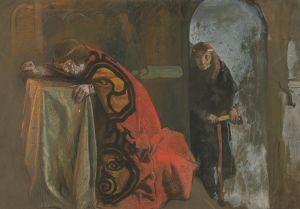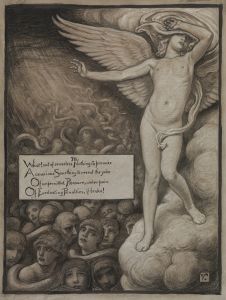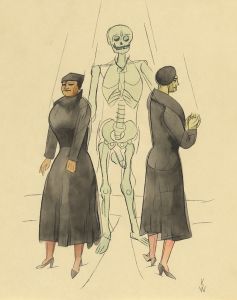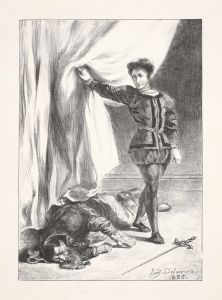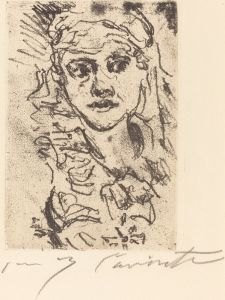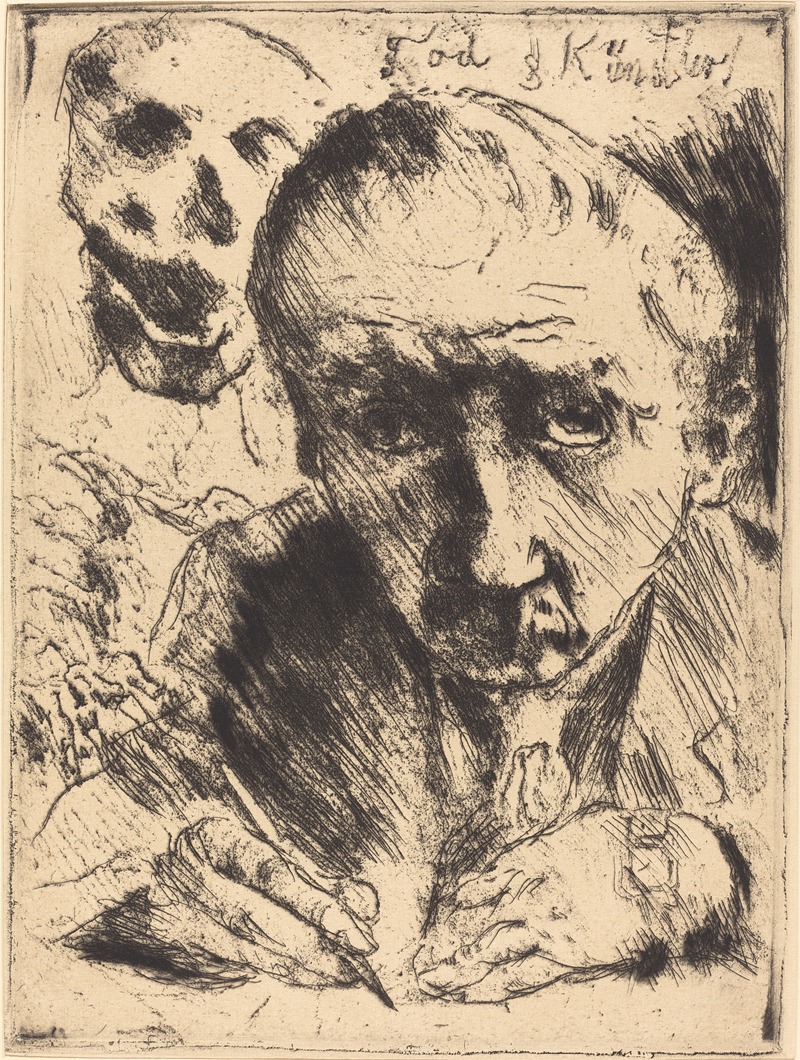
Tod und Künstler
A hand-painted replica of Lovis Corinth’s masterpiece Tod und Künstler, meticulously crafted by professional artists to capture the true essence of the original. Each piece is created with museum-quality canvas and rare mineral pigments, carefully painted by experienced artists with delicate brushstrokes and rich, layered colors to perfectly recreate the texture of the original artwork. Unlike machine-printed reproductions, this hand-painted version brings the painting to life, infused with the artist’s emotions and skill in every stroke. Whether for personal collection or home decoration, it instantly elevates the artistic atmosphere of any space.
"Tod und Künstler" (Death and the Artist) is a painting by the German artist Lovis Corinth, created in 1918. Corinth was a prominent figure in the German art scene and a leading member of the Berlin Secession, an art movement that sought to break away from traditional academic art and embrace more modern, expressive forms.
The painting is a striking example of Corinth's mature style, characterized by vigorous brushwork, bold use of color, and a deep engagement with themes of mortality and the human condition. "Tod und Künstler" depicts a dramatic and somewhat macabre scene where the artist confronts Death, personified as a skeletal figure. This confrontation is a recurring motif in art history, often symbolizing the artist's struggle with the inevitability of death and the quest for immortality through art.
In "Tod und Künstler," Corinth portrays himself in a vulnerable state, facing the skeletal figure of Death. The composition is intense and emotionally charged, with the artist's expressive brushstrokes conveying a sense of urgency and existential dread. The use of light and shadow in the painting enhances the dramatic effect, highlighting the contrast between life and death.
The painting was created during a tumultuous period in Corinth's life. In 1911, he suffered a stroke that left him partially paralyzed, significantly affecting his ability to paint. Despite this setback, Corinth continued to work with renewed vigor, and his later works, including "Tod und Künstler," reflect a heightened emotional intensity and a preoccupation with themes of mortality and the passage of time.
"Death and the Artist" is often interpreted as a reflection of Corinth's personal struggles and his confrontation with his own mortality. The skeletal figure of Death can be seen as a representation of the artist's fears and anxieties, while the act of painting itself becomes a means of grappling with these existential concerns. The painting is also notable for its psychological depth, capturing the complex emotions of fear, defiance, and acceptance.
Lovis Corinth's work, including "Tod und Künstler," had a significant impact on the development of modern art in Germany. His expressive style and willingness to tackle profound and often unsettling themes influenced a generation of artists and contributed to the broader movement towards Expressionism in early 20th-century art.
Today, "Tod und Künstler" is regarded as one of Corinth's masterpieces, exemplifying his skill as a painter and his ability to convey deep emotional and psychological truths through his art. The painting is held in high esteem by art historians and continues to be studied and admired for its powerful depiction of the human condition and the artist's confrontation with the inevitability of death.





